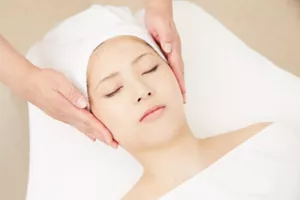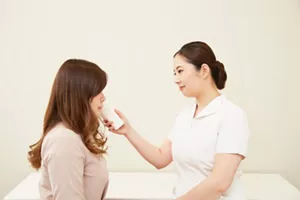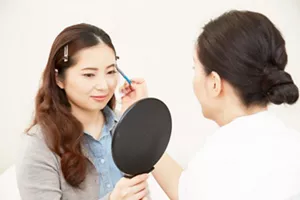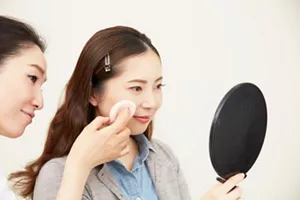Current Activities in Medical Soin Esthetic
Medical Soin Esthetic is implemented where specialized staff, such as estheticians, perform post-operative care under the guidance of physicians.
Number of patients who have undergone Medical Soin Esthetic:
381 individuals from 2015 to 2024 (excluding the period from February 2020 to January 2022)

Process of Medical Soin Esthetic
1. Examination by a physician
Before proceeding with skincare or makeup, a doctor will examine patient’s skin, including the condition of any scars.
2. Counseling and skin assessment
Our expert staff uses specialized equipment to assess patient’s skin condition and discuss current skincare routine and cosmetic practices. We also take photographs of the areas being treated. All these measurements and images are meticulously recorded to track their progress over time.

3. Medical skin care
Under the guidance of a physician, a specialist performs skincare treatments on postoperative skin. Medical skincare plays a vital role in maintaining the skin in good condition after symptoms have stabilized following treatment. Specifically, skincare is provided for skin with scars, grafted skin, and conditions such as tightness, roughness, wrinkles, dryness, and pigmentation after laser treatment, using cosmetics for cleansing, massages, and moisturization (e.g., toners, moisturizers, and masks).
Examples of treatment
Facial cleansing
Removing deep-seated pore impurities and old cuticles to cleanse the skin.
Massaging
Massaging to promote blood circulation for a brighter complexion and better skin texture.
Moisturization (e.g., toner, moisturizer, and lotion mask)
Using toners, moisturizers, masks, and other products, we deeply hydrate and protect patient’s skin from dryness.

4. Medical makeup
Under the guidance of a physician, a specialist applies makeup to the patient’s skin. Specifically, foundation and point makeup are applied to camouflage (make less noticeable) concerns such as spots and other discolorations.
A specialist suggests makeup methods, including those listed below, tailored to the patient’s skin condition and makeup habits, and offer advice on self-application.
- Color-correcting camouflage makeup
- Camouflage makeup for grafted skin areas
- Camouflage makeup for burn scars
- Camouflage makeup for scars from surgery or accidents
The purpose of medical makeup is to alleviate the mental burden associated with visible marks of scars, and so on. It also provides protection against UV rays and dryness. When brushes and sponges are used for makeup application, they are done so in a gentle and delicate way to avoid straining the skin.
While medical makeup helps ease emotional stress, personalized makeup suggestions are also offered, incorporating trends and seasonal looks to convey the joy of makeup.

Effectiveness of Medical Soin Esthetic (research achievements to date)
The following effectiveness has been observed in skin changes resulting from medical skincare.
- Softens skin
- Helps restore skin sensation
- Improves skin condition (dryness, texture, translucency)
- Brightens skin tone
Furthermore, through medical skincare, medical makeup, and home care advice, positive effects on patient’s mental well-being have been observed.
- Patients have reported feeling more at ease.
-
They have started to feel hopeful.
-
They have become cheerful.
- People around them have made positive comments about their improvement.

- Home
- Sustainability
- Corporate Citizenship Activities
- Lifestyle
- Medical Soin Esthetic (MSE)
- Current Activities in Medical Soin Esthetic
- Home
- Sustainability
- Corporate Citizenship Activities
- Lifestyle
- Medical Soin Esthetic (MSE)
- Current Activities in Medical Soin Esthetic
